Best Electric Guitar Under 1000 - Solidbody Guitar Choices 2024
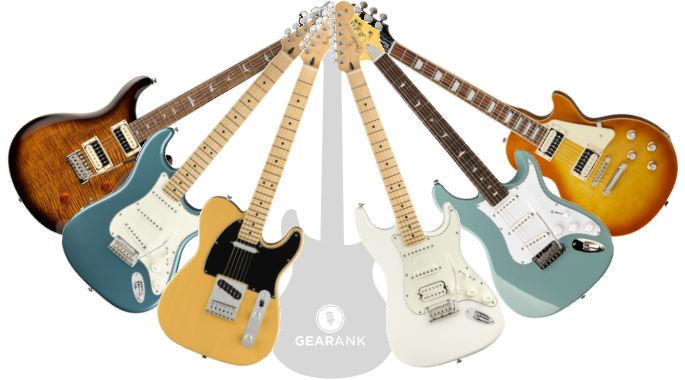
Author & Contributors
Alden Acosta
I'm a drummer and former lead guitarist of the band Callalily, a platinum selling multi-awarded band from the Philippines. I also studied music for 6 years majoring in percussion and jazz studies with a minor in classical piano.
Pickup Type: Single Coil (SSS)
PRS SE Silver Sky
Cons
- Needs to be set up to maximize potential (as with all guitars)
- 8.5" fingerboard radius might not satisfy purists
Pros
- Sound and feel that is reminiscent of vintage guitars
- Great sounding stock pickups - classic Strat tones
- Solid construction, leveled frets, and great intonation
- Neck profile is one of the best for any Strat type I've tried
When Paul Reed Smith announced the SE version of the John Mayer Silver Sky, with a demo featuring John Mayer cutting to the chase and playing "Slow Dancing In a Burning Room," I was somehow drawn into the hype.
It might be because the Stone Blue finish reminded me of a well-worn, Daphne Blue 1964 Fender Stratocaster I once had. I was struck with a double whammy of nostalgia and hype.
I immediately pre-ordered a unit in that finish (which is the best-selling one and is hard to get a hold of).
Out of the box, it didn't feel the way I expected a PRS to feel. The setup was high for my taste, and the pickups were not my preferred height. Fortunately, I didn't notice any finish flaws. I chalked it up to the difference between getting a PRS SE in the US and getting one anywhere else.
PRS SE guitars distributed in the US pass through the same quality checks as their Core models and thus get a final setup. Aside from major retailers that provide setup, other distributors may receive units straight from the factory. These, unfortunately, don't get set up after the shipment. Storage and shipment conditions may lead to a less-than-optimal playing feel.
Even before the setup, however, the neck felt comfortable. The carve is more vintage-inspired as it's slightly thicker from front to back, but the shoulders are between a soft V and a vintage C profile.
It's surprising to see this neck profile on modern guitars. It's perfect for Jimi-style thumb over chording and leveraging for big bends. Compared to the US Silver Sky, The back of the neck is finished in a thin, satin finish.
My experience with satin finishes is that over time, they naturally gloss up but retain that smooth feel. I've only had this guitar for a few months, and it's beginning to feel more like a worn-in vintage neck. I've seen discussions online about how many people prefer this neck over the US, so if that's what threw you off about the core Silver Sky, you might like the SE one a lot better.
While setting up the SE Silver Sky, I kept referencing official PRS documentation for neck relief, action, intonation, and pickup height. The nut slots were cut perfectly from the factory, so I encountered no problems.
The frets needed a little polishing, but I didn't encounter any stray frets that needed hammering. Nor did I feel any rough edges along the side of the fretboard. A PRS Maryland facility team usually does some of these things, and I'm fortunate to have some experience setting up my guitars.
If you're more of a player than a tinkerer than me, getting ANY guitar professionally set up is a must. It makes or breaks even the most expensive instruments.
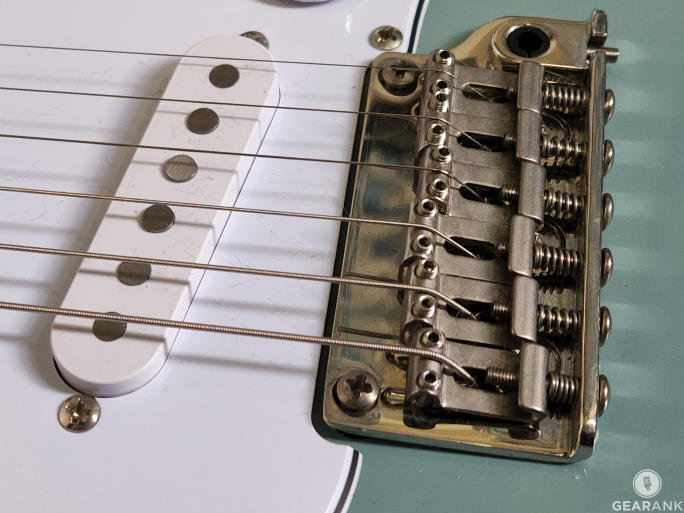

The Silver Sky SE bridge makes full contact with the body at an angle. This isn't a manufacturing or setup error. I also removed the backplate to mimic the Core model.
The neck is also slightly narrower, close to the nut, when I compared the SE with the Core model at the store. The profile becomes more and more similar as you go up the neck. Along with the 8.5" radius rosewood fingerboard (versus the Core's vintage 7.25"), the SE neck feels a bit more comfortable to play with a full grip on the neck. Those with smaller hands would also love this change from the US model.
An important thing to note that was odd initially is how the bridge is angled from the bridge posts. In this Guitar World interview, PRS Chief Operations Officer Jack Higginbotham said: "We're going about 2/32-inch up on the front and then decking the back of the bridge. I've tried it all sorts of ways: fully decking it, coming up one 32nd, two 32nds, and dropping the saddles down – this is what we think is the sweet spot to how to get the guitar sounding the best."
The guitar immediately felt better after setting it up according to my preferences. Much more important than that, it sounded better. The sustain was excellent, and after being adjusted to the factory recommended height by PRS, the pickups were surprisingly warm for single-coil pickups.
The classic strat tones were still there. They didn't have the plinky-ness of modern Fender guitars. People who are used to the "modern hi-fi Fender" sound may find the SE Silver Sky's pickups to be the equivalent of having the tone knob rolled back slightly.
The PRS 635 JM "S" pickups have a lower resonant peak, even compared to their Core version, as found by Guitar Pickup Database in this investigative post.
However, the warmer, smoother sound of the SE pickups works well to prevent the typical "single coil icepick" sound. Interestingly enough, I remember the 1964 Stratocaster I had to have a warmer and smoother sound than the Fender 2011 American Vintage 62 Stratocaster I had at the time.
The Silver Sky's pickups are named so because John Mayer prefers the sound of mid-60s Stratocasters. Particularly those made between 1963 and 1965. The overall vibe and tonality of the bridge and neck pickups give the SE Silver Sky a unique sound. One that would require other guitars to be fitted with boutique pickups to achieve.
On paper, the Silver Sky SE is a downgrade from the Core model. But after my experience with making music with it, it didn't get in the way of me laying down tracks or getting inspired just by noodling around with it.
Despite my guitar lineup of very high-end guitars, I habitually reached for the SE. It's a fantastic guitar to noodle around while doing other tasks (such as writing this review).
And for a guitar that many might feel is a "lesser" version of a premium one, it is quite a feat to creep into my subconscious and grow a habit of reaching for it in idle time.
I was never actually wow-ed or amazed by it, but it went from disappointing me to a guitar I find great comfort in holding and playing. In a way, it's like that one person who you didn't like at first, but then as you get to know them better, you become the best of friends. It's the best electric guitar for the money.
Specifications
- Body: Poplar
- Finish: Gloss
- Bridge: 2-Piece Steel Tremolo
- Pickups: x3 PRS 635JM "S" Single-coil
- Neck: Maple
- Scale Length: 25.5"
- Fingerboard: Rosewood
- Fingerboard Radius: 8.5"
- Frets: 22
- Nut Width: 1.625"
- Controls: 1 x master volume, 2 x tone
- Pickup Selector: 5-way blade pickup switch
| Website | Source | *Rating Value |
| Gearank | Raphael Pulgar | 95/100 |
Fender Player Stratocaster with Maple Fretboard
Cons
- Sounds a bit harsh compared to American-made Stratocasters
- Requires minor adjustments out of the box
Pros
- Upgraded Alnico V pickups from ceramic pickups
- Intuitive dedicated tone control for the bridge pickup
- Expressive, light, and quick 2-point tremolo bridge
- Comfortable "Modern C" neck shape and good fretwork
The Fender Player Stratocaster represents an update and upgrade to the well-loved "Mexican Fender" Strat of yore. There's even a song by Weezer that references it.
Now equipped with Alnico V pickups - the Mexican Player Strat produces a premium sound. It's more akin to the "American Fender" Strat, with added niceties.
It has bright attack and sound and a "Modern C" neck shape that's like a comfortable middle between classic C and D-shaped neck profiles.
It also has a superb 2-point tremolo that bounces back into tune with speed and accuracy.
Another notable feature is its two tone controls, where the second tone knob affects the bridge pickup. This is another update from the old MIM models that used to have no tone control for the bridge, leaving it slightly spiky.
One minor gripe is that the Alnico V pickups sound too bright and piercing. Especially when compared to American-made models. This prompts more fiddling with the tone controls.
Still, its new Alnico V pickups and minor design updates make this a worthy upgrade for owners of cheaper Strats.
There is no denying this is a genuine Fender Stratocaster sharing its DNA with those old Strats that changed the history of rock and roll forever, albeit with a more affordable price.
Specifications
- Body: Alder
- Finish: Gloss Polyester
- Bridge: 2-Point Synchronized Tremolo with Bent Steel Saddles
- Pickups: 3 x Player Series Alnico 5 Strat® Single-Coil
- Neck: Maple
- Scale Length: 25.5"
- Fingerboard: Maple
- Fingerboard Radius: 9.5"
- Frets: 22
- Nut Width: 1.650"
- Controls: Master Volume, Tone 1. (Middle / Neck Pickup), Tone 2. (Bridge Pickup)
- Pickup Selector: 5-Position Blade
| Website | Source | *Rating Value |
| MusicRadar | Michael Astley-Brown | 90/100 |
Pickup Type: Single Coil (SS)
Fender Player Telecaster with Maple Fretboard
Cons
- Decidedly traditional - not much new from the Telecaster formula
- Fretwork quality is not as consistent
Pros
- Classic Fender Telecaster for a relatively affordable price
- Bright and high output Alnico V single coil pickups - good gain without losing too much character
- String-through body and block steel bridge provides excellent sustain and easy intonation adjustments
- Easy to play "Modern C" neck shape
The Fender Player Telecaster is the current iteration of the MIM Tele. It sports a traditional dual single coil setup (SS) with Alnico V magnets. The fingerboard is available in a bright maple or dark Pau Ferro, depending on the color you get.
It has a string-through alder body Telecaster hardtail bridge made of block steel. This adds increased sustain without losing that signature Telecaster twang. Also, its "Modern C" neck is very comfortable to play.
The Alnico V pickups afford this Tele a bright bite at the bridge position. More importantly, it takes gain like a champ thanks to its higher output than other single-coil pickups.
I see this as a no-frills, dare I say "basic" classic Telecaster: Two pickups (Bridge and Neck Pickup), volume, and tone knobs.
Note that you have many other options for this price, so you must like this configuration of Tele to justify grabbing this axe.
There are few groundbreaking features; it's just a solid guitar for a solid price.
If you want that authentic Fender Telecaster experience for less, the Fender Player Series Telecaster is a Mexican Tele true to its roots.
The Telecaster is the quintessential solid-body guitar. And the Player Series Telecaster is a must-try for all classic Tele fans (like myself).
Specifications
- Body: Alder
- Finish: Gloss Polyester
- Bridge: 6-Saddle String-Through-Body Tele with Block Steel Saddles
- Pickups: 2 x Player Series Alnico 5 Tele Single-Coil
- Neck: Maple
- Scale Length: 25.5"
- Fingerboard: Maple
- Fingerboard Radius: 9.5"
- Frets: 22
- Nut Width: 1.650"
- Controls: Master Volume, Master Tone
- Pickup Selector: 3-Position Blade
| Website | Source | *Rating Value |
| YouTube | Elmo Karjalainen | 93/100 |
Pickup Type: Humbucker (HH)
PRS SE Custom 24-08
Cons
- Neck is bit wide and hefty
- Not for those who are looking for traditional Strat or Les Paul tones
Pros
- Build quality is exemplary
- Versatile 8 pickup combinations
- Intuitive mini-toggle switch for coil splitting
- Balanced and harmonically rich tone
The PRS SE Custom 24-08 is the affordable version of the iconic Custom 24, the flagship guitar that the company launched when they were starting back in 1985.
It carries over the staple PRS double cutaway design with a mahogany body and maple top wrapped in eye-pleasing flame maple veneer. As expected, build quality is consistently good, even for what the brand considers Student Edition.
This stunning guitar comes with dual humbuckers, which is typical of PRS. But what sets this guitar apart are two mini-toggle switches that let you coil split the neck and bridge humbuckers.
This expands the pickup combinations from the usual 3 to 8 - hence the Custom 24-08 label. So you get bright single-coil tones along other shades of tones via the different pickup combinations. This makes the SE Custom 24-08 one of the most versatile guitars in the PRS SE lineup.
I find the mini-toggle switches more intuitive than push-pull coil split knobs. You can better monitor your settings and switch between tones while performing.
Both the neck and bridge humbucker tones are warm and fat but with a tinge of brightness, while the single coil tones are clear and crisp but a bit warmer than Strat-type guitars.
I find that PRS guitars generally have a "middle of the road" tone, thanks to their 25" scale length - which sits between the Strat's 25.5" and Les Paul's 27.5" scale lengths.
This balanced voicing makes mixing into tracks easy. But those looking for the trebly bite of a Strat or the grit of a Les Paul will be less impressed.
It has a wide-thin maple neck and a rosewood fretboard with the iconic PRS bird inlays that let you quickly tell which brand made the guitar. Playability and intonation are superb, as expected from PRS.
It's easy to see why the PRS SE Custom 24-08 is rated highly in the realm of mid-priced electric guitars, with its combination of impeccable craftsmanship, high quality materials, versatile tonal palette, and eye-catching aesthetics. This instrument is a testament to PRS's commitment to delivering quality and performance for players at every level.
Specifications
- Body: Mahogany
- Finish: Gloss Polyurethane
- Bridge: PRS Molded Tremolo
- Pickups: 2X PRS TCI-tuned "S" Humbucker
- Neck: 3-Piece Maple
- Scale Length: 25"
- Fingerboard: Rosewood
- Fingerboard Radius: 10"
- Frets: 24, Medium Jumbo
- Nut Width: 1.6875"
- Controls: 1 x master volume knob, 1 x master tone knob
- Pickup Selector: 2-way mini-switch (coil-tap), 3-way blade pickup selector
| Website | Source | *Rating Value |
| Guitar Player | Art Thompson | 90/100 |
Epiphone Slash Les Paul Standard
Cons
- Quality of the output jack is a bit concerning
- Plastic tuning keys
Pros
- Sounds and feels like a Gibson, but more economical
- Excellent tuning stability and smooth C neck feel
- Great sounding Seymour Duncan Slash pickups, punchy and can go from crunch to growl.
- Incredible sustain
The Epiphone Slash Les Paul Standard lets you in on the iconic Les Paul experience without venturing into the higher price brackets of Gibson guitars.
This guitar, designed in collaboration with legendary guitarist Slash, encapsulates what makes the Les Paul one of the very best guitars - and does so at an accessible price point.
This Epiphone Les Paul is crafted with a solid mahogany body and a visually stunning AAA flame maple top. And it boasts quality hardware that ensures both resonant tones and eye-catching aesthetics.
The inclusion of Seymour Duncan "Slash" humbucking pickups gives this guitar artist-approved tones, meant for the high-octane rock tones that Slash is known for. These thick sounding humbuckers give it excellent tone for classic rock and similar musical styles.
Its slim-taper C neck lets you easily navigate the fretboard and the lighter tension of its traditional 24.75" scale length results in a comfortable playing experience. Build quality is good, just don't compare it to expensive Gibson Les Paul models from Gibson Custom Shop.
The Epiphone LockTone Tune-O-Matic bridge and stop bar tailpiece contribute to good intonation, enhanced sustain, and tuning stability.
The Epiphone Slash Les Paul Standard proves Epiphone's commitment to delivering quality instruments at an affordable price.
This is a no-brainer if you're a fan of Slash. But this is also highly recommended if you are eyeing the Les Paul experience without breaking the bank.
Specifications
- Body:Mahogany
- Finish:Gloss
- Bridge:LockTone Tune-O-Matic Bridge with Stopbar Tailpiece
- Pickups:2X Custom Pro Humbucker
- Neck:Mahogany
- Scale Length:24.75"
- Fingerboard:Indian Laurel
- Fingerboard Radius:12"
- Frets:22, Medium Jumbo
- Nut Width:1.693"
- Controls:2 Volume, 2 Tone, CTS Potentiometers, Orange Drop Capacitors
- Pickup Selector:3-way toggle pickup selector
| Website | Source | *Rating Value |
| Music Radar | Editor | 90/100 |
Pickup Type: Mixed
Ibanez RG550 Genesis Collection
Cons
- Some minor cosmetic inconsistencies.
- Finish options can be a bit too loud for some
Pros
- Stage-worthy quality even when all-stock, no need for upgrades
- Neck pickup has a beautiful singing tone
- Articulate bridge pickup, viable for fast and heavy rhythm playing
- Fast and smooth playability
- Reliable intonation even when doing wild tremolo bar techniques
The RG550 is part of the Japanese Guitar maker Ibanez' Genesis Collection. It pays homage to the classic RG series body style while incorporating modern features that cater to contemporary players.
It sports an 80s-style super Strat basswood body complete with pickguard, and it comes in 3 colorful finishes: Road Flare Red, Purple Neon, and Desert Sun Yellow.
Being an Ibanez guitar, effortless playability is a given. It has a Super Wizard 5-piece maple/walnut neck with a 24-fret maple fingerboard, making it one of the best guitars for developing speed and advanced playing techniques.
It has a 5-way pickup selector gives you five different HSH pickup combinations, ranging from warm humbucker tones to bright single-coil combination tones. It also has the Edge tremolo bridge paired with a locking nut, allowing dive bombs and other wild tremolo techniques.
The RG550 looks like a guitar made for rock and metal, and rightly so, with its humbucker tones and sleek aesthetics. It certainly has the tone flexibility and playability expected from metal guitars. But it is surprisingly versatile with single-coil tones that work with different genres. If you can look beyond its overly colorful finish, this can be an all-around guitar for multiple playing styles.
While it may lack some premium appointments in more expensive RG models, the RG550 doesn't compromise performance. Its a great guitar to get a taste of Ibanez quality at a more accessible price point.
The Ibanez RG550 Genesis Collection stands out in the HSH guitar category, offering superb playability and versatile tones, making it a worthy contender against more expensive counterparts.
Specifications
- Body: Basswood
- Finish: Gloss Polyurethane
- Bridge: Edge Locking Tremolo
- Pickups: V7 Humbucker, S1 Single-coil, V8 Humbucker
- Neck: 5-piece Maple/Walnut
- Scale Length: 25.5"
- Fingerboard: Maple
- Fingerboard Radius: 16.9"
- Frets: 24, Jumbo
- Nut Width: 1.692"
- Controls: 1 x master volume, 1 x master tone
- Pickup Selector: 5-way blade pickup selector
| Website | Source | *Rating Value |
| Music Radar | Chris Corfield | 100/100 |
Things to Consider When Buying a Solidbody Electric Guitar
Pickup Configuration
The best electric guitars of all time all have great tones, and the sound of an electric guitar is dictated by the type of pickups used. The most common pickups used by popular guitar brands are Humbucking (double coil) and Single Coil pickups.
Single Coil pickups emphasize the upper frequencies, while Humbuckers have a rounder tone with more of the low-end. In addition to their expected characteristics, the position of the pickups and the way they are combined also affect the resulting sound.
FilterTron is another popular pickup type that is available in this price range. It is a staple pickup of Gretsch guitars and is a big part of their sound, which is described as a cross between a single coil and humbucker pickup. Shape and size-wise, filtertrons are similar to humbuckers but have different dimensions.
The P-90 pickup is a single-coil pickup developed by Gibson that usually comes in the same shape and size as humbuckers. It continues to gain traction in the market because of its distinct grit and growl.
There are a few more pickup variations, but we've left them out because they are less popular in this price range. If you need help deciding which one to get, you can look at the configuration used by your favorite guitarists.
Here are some pickup configurations that can be found in the sub $500 price range:
SSS - Guitars with three single coils, as seen on traditional Stratocasters.
SS - Guitars with two single coils, as seen on Telecasters.
HH - Guitars with two humbuckers as seen on Les Pauls, SGs, Super Strats, Flying Vs, and more... these are favored by those who prefer rock and chunky metal tones.
FF - Guitars with two Filter'Trons, most commonly found on Gretsch guitars but also on some Fender guitars - you can learn more in this article by James M Brill for Reverb.
HSS - Guitars with two single coils and a humbucker in the bridge position, as seen on some modern Stratocasters and Superstrats.
HSH - Guitars with two humbuckers for the bridge and neck position and a single coil for the middle position, as seen on Super Strats and Custom Les Pauls.
PP - Guitars with two P-90s for the bridge and neck position can usually be seen on some SGs and Les Pauls.
HP - Guitars with a Humbucker for the bridge and P90 for the neck position. This is usually seen in custom models, but some manufacturers like G&L have incorporated this in affordable, mass-produced models.
FP - Guitars with a FilterTron for the bridge and P90 for the neck position are usually seen in custom models and are sometimes used by Gretsch in their entry-level to mid-tier models.
In addition to the above configurations, technology has made it possible for humbuckers to sound like single coil pickups via "coil tapping"," allowing for flexible tone options that were impossible with older guitars. Another nifty modern feature is the use of No Load Tone Circuits that behave like true bypass when the tone knob is set to 10.
Playability
Playability is sometimes overlooked by new guitar buyers. This is where guitar neck specifications come into play - which, when neglected, can result in an unpleasant playing experience for students and advanced players. Below, we've listed the four most important specs and a quick overview of how they affect playability.
Scale Length
Guitar Scale Length is the distance where the strings are stretched from the nut to the bridge saddle. Physics dictates that the longer the scale length is, the more tension is required to get strings in tune. This is why some players prefer the "slack" feel of a Les Paul with its 24.75" scale length, while others want the biting attack of the tighter strings on a 25.5" Scale Length Telecaster.
Nut Width
This dictates the space between strings at the nut. Those with smaller hands will appreciate smaller nut widths (1.65"), while others who prefer more room for their fingers will want the opposite.
Fingerboard Radius
This specification describes how flat or round the fingerboard is without going too technical. Generally speaking, the flatter the radius, the lower the string action, which means more effortless single-note playing and bending. On the other hand, rounder fingerboards follow the natural shape of the fretting hand, so they are more chord-friendly. Some players prefer the feel of vintage Fender guitars with a 7.25" radius, while others want slightly flatter ones at 9.5". Those into shredding and modern rock usually go for flatter radii ranging from 12" to 16". Compound radius fingerboards try to give players the best of both worlds by making the fingerboard flatter as you go up the neck, where you usually do your noodling. Guitar fret wires are another point of consideration, as they are related to the overall feel of the instrument.
Neck Profile
This describes the shape of the back of the neck. Together with the fingerboard radius and neck finish, it dictates the overall feel of the neck. Wide, thin neck profiles usually complement flat radius guitars, while rounder fingerboards come with U or C shape necks. Again, this is more a matter of preference than right or wrong. Aside from the shape, the type of wood used on the neck affects the tone. Maple neck guitars are expected to be slightly brighter sounding than their mahogany neck counterparts.
Bridge
This price range improves bridge hardware quality over cheaper models, from the usual tune-o-matic style bridges to a licensed Floyd Rose bridge system that allows for tricks like note dives and pull-ups. While having a fancy tremolo bar system may be good, there are a few downsides, including tuning instability (Floyd Rose systems are better at preventing this), inconvenient string changes, and a longer learning curve for its operation and maintenance.
Floating-type tremolo bars are usually paired with locking nuts to help alleviate tuning-related issues. The choice is up to you whether to go for simplistic tune-o-matic bridge setups or the more complex floating bridge ones. Advanced playing style and technique will often require floating bridge.
Body Shape and Finish
The guitar's shape and finish can spell the difference between a boring and an inspiring instrument, so it's best to get one that looks great and feels comfortable. Guitar players are drawn to the style of instruments that their heroes play, so they are your best starting point, but be bold and look at other guitar styles.
Decades after they were first released, the Stratocaster, Telecaster, Les Paul and SG are still the most prominent solidbody guitar shapes. While there are other more eccentric shapes meant for rock and metal, most of what guitar builders produce today are either inspired by or a direct clone of these guitars. There are many Different Guitar Types, each with different specs and hardware that impact playing feel and tone.
Do Cheap Electric Guitars Sound Bad?
Not all! There are some more affordable guitars that, if correctly set up, can sound amazing, even more so if you upgrade the default pickups into something better from brands like EMG and Seymour Duncan Pickups. A cheap guitar's sound can also be dramatically improved in the hands of pros.
However, as you go up in price, not only does the sound quality change, but so does the feel. The top picks outlined in this guide are at the best bang-for-buck.
Best Electric Guitars Under $1,000 Selection Methodology
The first edition was published on August 27, 2022. The current edition was published on Dec 11, 2023.
To be eligible for consideration in our recommended list above, a guitar had to meet the following criteria:
- Electric Guitar
- Solidbody
- 6 Strings
- Priced from $500 to $1000
- Had to be available from a major US retailer
With these criteria in mind, we created a short list of eligible guitars, which for this edition included 41 models. We then collected ratings, reviews, videos, forum discussions, and other user feedback about each guitar and fed that data into the Gearank Algorithm to produce the Gearank Rating scores out of 100 you see above. The total number of sources analyzed went up to over 10,500. We then used those ratings to recommend the highest-rated guitars in each pickup configuration listed above.
For more information about our methods, please read How Gearank Works.
About the Author and Contributors
Here are the key people and sources involved in this guide's production - click on linked names for information about their music industry backgrounds.
Lead Author & Researcher
Alden Acosta
I'm a drummer and former lead guitarist of the band Callalily, a platinum selling multi-awarded band from the Philippines. I also studied music for 6 years majoring in percussion and jazz studies with a minor in classical piano.
I've been playing electric guitar professionally on and off since I was 17. I'm currently sporting a Tele "partscaster" and I'm hoping to be reunited with my old Hamer XT Archtop Solid Body Electric Guitar someday.
Contributors
Alexander Briones: Update and Editing
Raphael Pulgar: PRS SE Silver Sky review and photographs
Jason Horton: Illustrating
Jerry Borillo - Research
Media
Main/Top Image: Compiled using photographs of the PRS SE Custom 24, Fender Player Stratocaster, Fender Player Telecaster, Fender Player Stratocaster HSS, PRS SE Silver Sky and Epiphone Les Paul Classic.
The videos have been embedded in accordance with YouTube's Terms of Service.
The individual product images that do not include the Gearank logo were sourced from websites, promotional materials or supporting documentation provided by their respective manufacturers. The PRS SE Silver Sky Bridge & Springs were photographed by Raphael Pulgar.



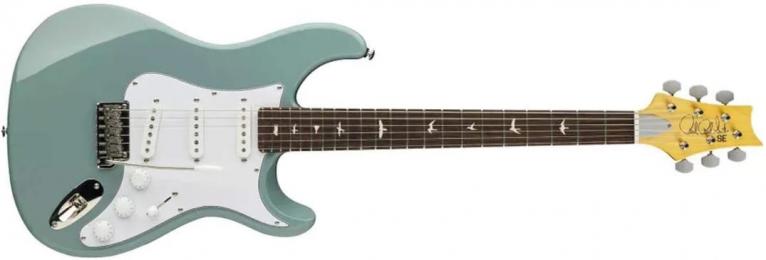


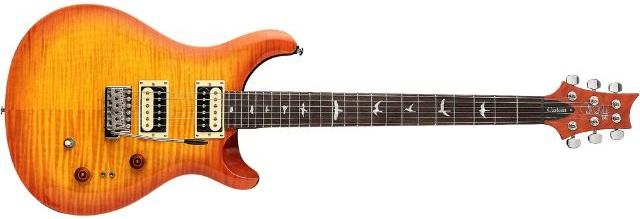




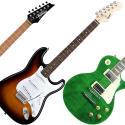
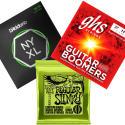
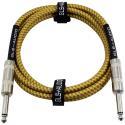

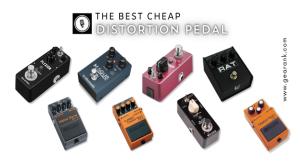
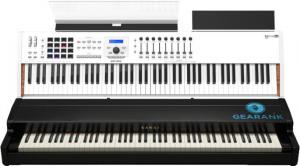
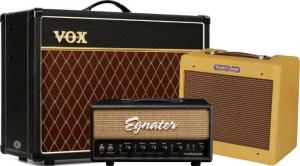
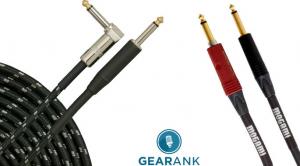
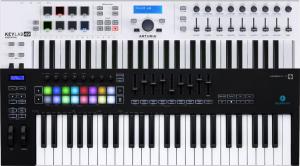
Comments
If you have any questions
Submitted by Jason Horton on
If you have any questions about sub $1000 electric guitars, go ahead and post them here and one of the Gearank team members will do their best to give you an answer.